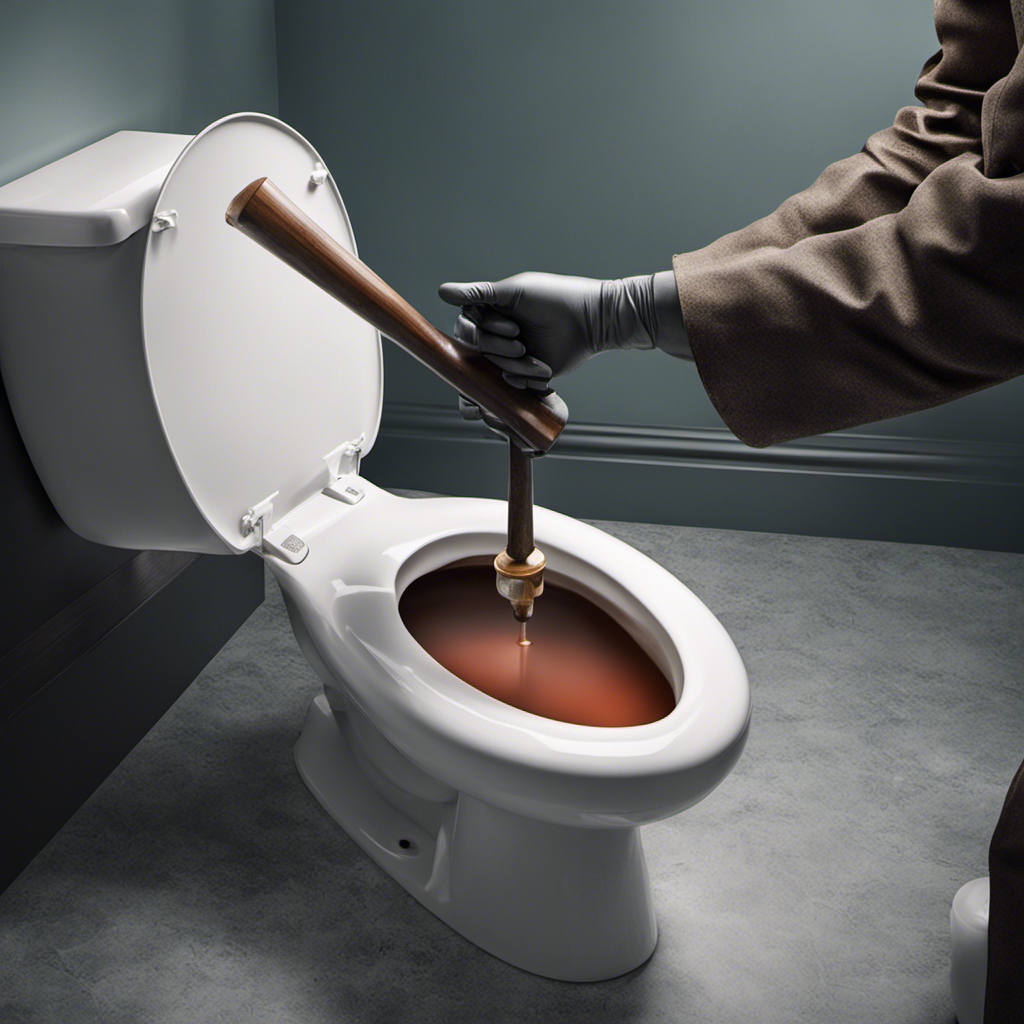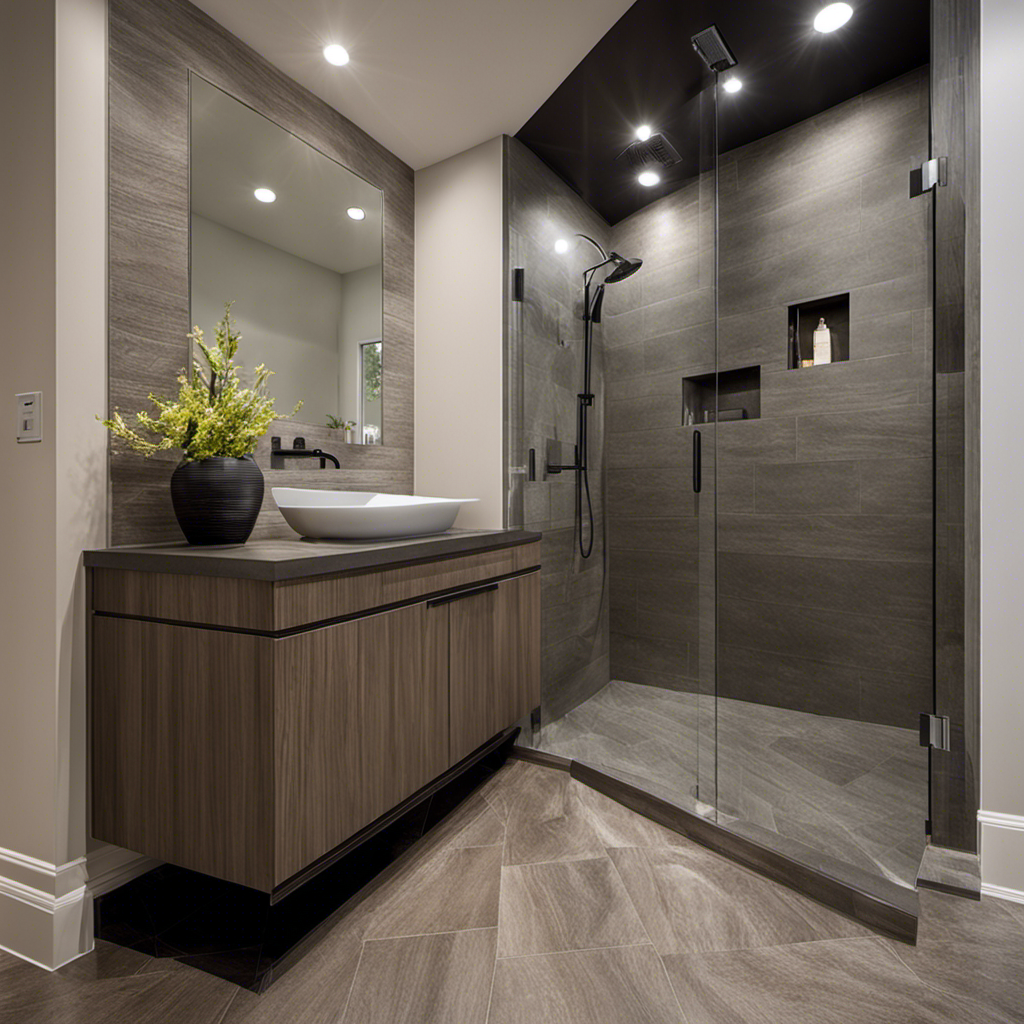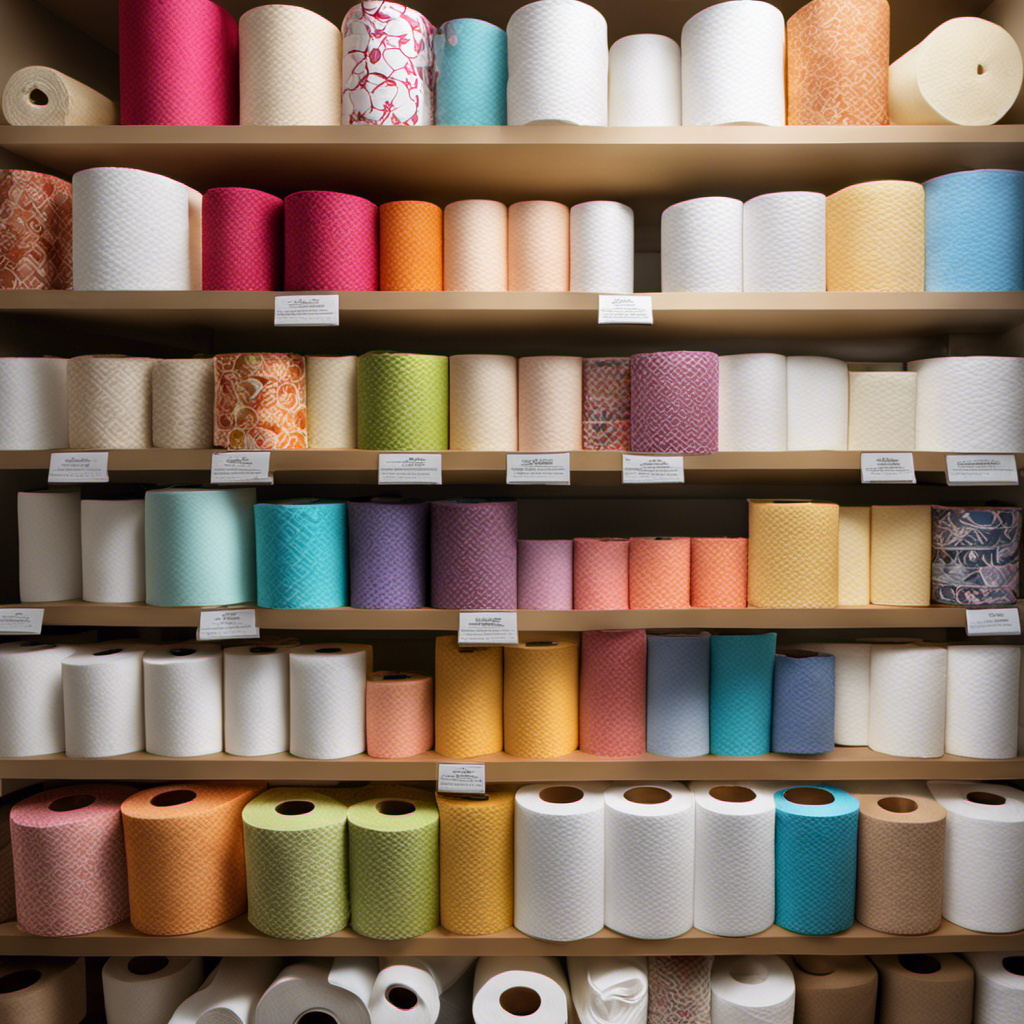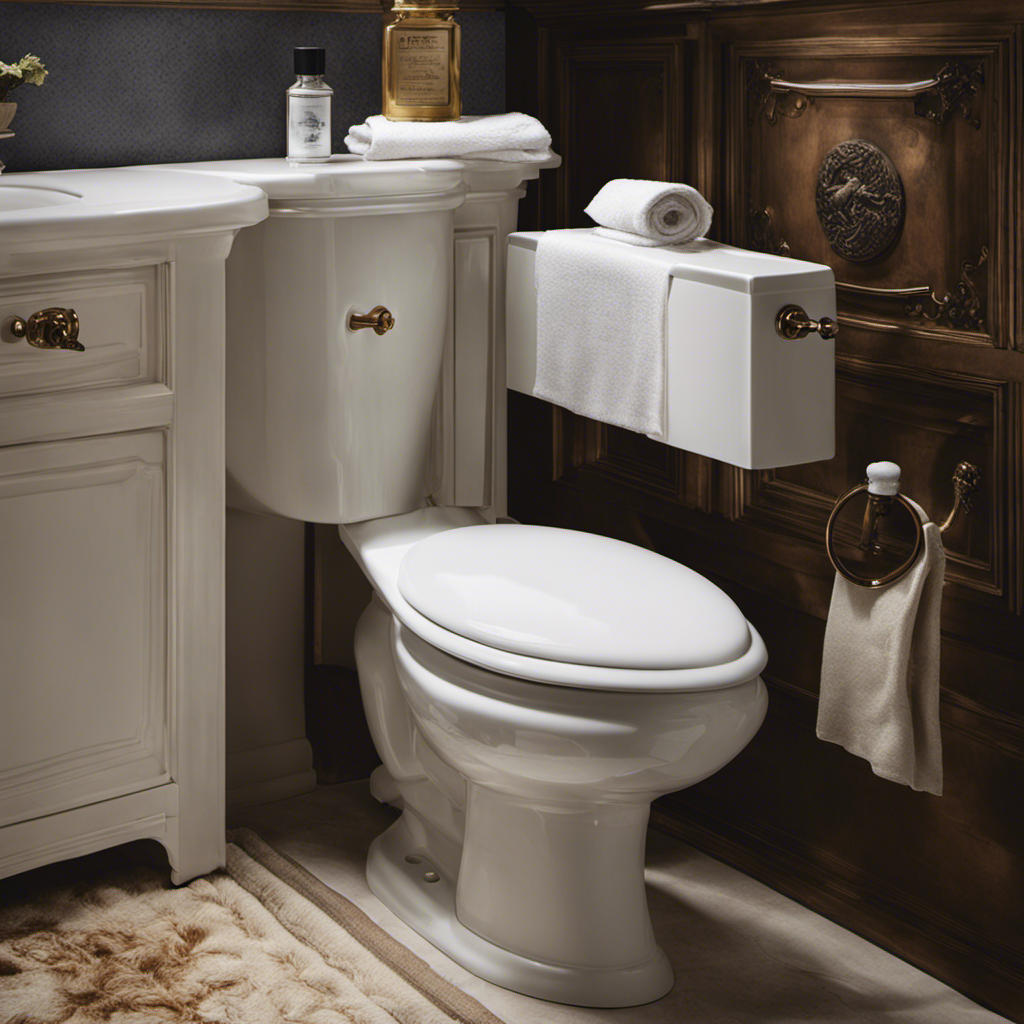I’ve been there before, standing in front of a clogged toilet, feeling frustrated and unsure of what to do next. But fear not! In this article, I’ll guide you through the step-by-step process of unclogging a toilet.
From the causes of toilet clogs to the tools you’ll need, I’ve got you covered.
Plus, I’ll share some natural remedies and prevention tips to keep those clogs at bay.
So let’s dive in and learn how to unclog a toilet like a pro.
Key Takeaways
- Proper flushing habits and avoiding non-flushable items can prevent toilet clogs.
- Tools and techniques like plungers, toilet augers, and hot water can effectively unclog toilets.
- Regular maintenance practices and avoiding excessive toilet paper usage can help prevent clogs.
- Natural remedies like using a baking soda and vinegar mixture can also be effective in clearing toilet clogs.
Causes of Toilet Clogs
You might be wondering what causes toilet clogs. Well, let me break it down for you.
Toilet clogs can occur due to a variety of reasons, but the most common cause is improper flushing of items that should not be flushed. These can include things like sanitary napkins, wipes, or excessive toilet paper.
Another common cause is a buildup of mineral deposits or sediment in the pipes, which can restrict the flow of water and lead to clogs.
Signs of a clogged toilet include water rising to the brim when flushed, slow draining, or a gurgling sound coming from the toilet bowl.
To prevent toilet clogs, it is important to only flush toilet paper and waste, and avoid flushing any other items down the toilet.
Tools You’ll Need to Unclog a Toilet
To tackle this issue, you’ll need a plunger and a bucket of hot water. These tools are essential for DIY toilet unclogging.
The plunger is used to create suction and dislodge the clog, while the hot water helps to break down any debris.
Before beginning, it’s important to note some toilet clog prevention tips such as avoiding flushing excessive toilet paper or foreign objects.
Now, let’s move on to the step-by-step guide to unclogging a toilet, where I will walk you through the process of using these tools effectively.
By following these instructions, you’ll be able to unclog your toilet and get it back to working order in no time.
Now, let’s get started!
Step-by-Step Guide to Unclogging a Toilet
When it comes to common toilet clogging causes, there are a few key culprits to keep in mind. These include excessive toilet paper usage, foreign objects being flushed down the toilet, and a build-up of hair and debris in the drain.
To effectively unclog a toilet, there are several techniques you can try. One option is using a plunger, which can create suction and help dislodge the blockage. Another option is using a toilet auger, a tool specifically designed to remove clogs in the toilet drain. Finally, you can try using a mixture of hot water and dish soap, which can help break down the clog and make it easier to flush away.
Common Toilet Clogging Causes
One of the most common causes of toilet clogging is using too much toilet paper. It’s important to be mindful of the amount of toilet paper we use to prevent unnecessary clogs.
Here are some other common causes of toilet clogging that you should be aware of:
- Flushing non-flushable items such as wipes, dental floss, or feminine hygiene products.
- Poor toilet maintenance, like infrequent cleaning or neglecting to fix a running toilet.
- Hard water deposits that accumulate over time and restrict the flow of water.
- Plumbing issues, such as tree roots invading the sewer line or a blocked drain pipe.
By understanding these common causes, we can take steps to prevent toilet clogs and troubleshoot any issues that may arise.
Regular maintenance, proper flushing habits, and avoiding flushing non-flushable items are key in keeping our toilets clog-free.
Effective Unclogging Techniques
Using a plunger is a common and effective method for clearing clogs in the bathroom. Here are some troubleshooting tips and effective techniques to help you unclog your toilet.
Firstly, make sure you have a plunger that has a flanged end, which creates a better seal. Place the plunger over the drain hole and apply gentle downward pressure. Then, push and pull the plunger vigorously to create suction and dislodge the clog. Repeat this motion several times until the water starts to drain.
If the plunger doesn’t work, try using a toilet auger or a drain snake. Insert the auger into the drain hole and rotate it clockwise to break up the clog.
Natural Remedies to Unclog a Toilet
You can try using baking soda and vinegar as a natural remedy to unclog your toilet. It is an effective technique that can help clear the blockage without the need for harsh chemicals. Here is a step-by-step guide on how to do it:
- Pour one cup of baking soda into the toilet bowl.
- Slowly pour one cup of vinegar into the bowl.
- Let the mixture sit for about 30 minutes to an hour.
- Flush the toilet and see if the clog is cleared.
This natural remedy works by creating a chemical reaction between the baking soda and vinegar, which helps break up the clog and clear the pipes. It is a safe and environmentally friendly option to try before resorting to other methods.
Remember to always use caution and wear protective gloves when attempting any unclogging techniques.
Tips for Preventing Toilet Clogs
When it comes to preventing toilet clogs, there are a few key points to keep in mind.
First, it’s important to use the proper flushing technique. This means holding down the flush lever until all the waste has been fully flushed away.
Secondly, regular maintenance practices can go a long way in preventing clogs. This includes using a plunger or drain cleaner when necessary, as well as regularly checking and cleaning the toilet’s trap.
Lastly, avoiding excessive toilet paper is crucial. It’s important to only use the necessary amount of toilet paper and to avoid flushing anything other than waste and toilet paper down the toilet.
Proper Flushing Technique
To properly flush the toilet, make sure to push down the handle all the way. This ensures that the flushing mechanism inside the toilet tank is activated, allowing water to flow into the bowl and effectively remove waste.
Here are some important tips for proper flushing techniques and troubleshooting flushing problems:
-
Check the water level: If the water level in the toilet bowl is low, it may not be able to generate enough force to flush properly. Adjust the water level by adjusting the float or fill valve inside the tank.
-
Clear any clogs: If the toilet doesn’t flush or drains slowly, there may be a clog in the pipes. Use a plunger or a toilet auger to clear the obstruction and restore proper flushing.
-
Maintain the flushing mechanism: Over time, the flushing mechanism may become worn or faulty. Regularly check and clean the flapper, fill valve, and other components to ensure they are functioning properly.
-
Seek professional help: If you’re experiencing persistent flushing problems or if the toilet is consistently clogging, it may be best to consult a professional plumber who can diagnose and fix the issue.
Regular Maintenance Practices
Regular maintenance practices can help prevent potential issues with your toilet. Here are some regular maintenance tips to follow:
-
Check the flushing mechanism: Open the tank lid and inspect the components for any signs of damage or wear. Replace any faulty parts.
-
Clean the flushing mechanism: Remove any debris or mineral deposits that may have accumulated in the flush valve or flapper. Use a brush or cloth and vinegar to dissolve any stubborn build-up.
-
Monitor water levels: Ensure the water level in the tank is at the appropriate level, usually marked on the inside of the tank. Adjust the float if necessary.
-
Look for signs of a clogged toilet: If you notice slow flushing, gurgling sounds, or water backing up, it may indicate a clogged toilet. Address the issue promptly to prevent further damage.
Avoiding Excessive Toilet Paper
One way you can prevent problems is by being mindful of how much toilet paper you use. Excessive toilet paper usage can lead to clogs and plumbing issues.
Here are some simple steps to reduce your toilet paper usage:
- Consider using toilet paper alternatives such as bidets, wet wipes, or reusable cloth wipes.
- Use only the amount of toilet paper necessary for proper cleaning.
- Fold the toilet paper instead of bunching it up, as this will help you use less.
- Teach children and family members the importance of using an appropriate amount of toilet paper.
By implementing these practices, you can reduce your toilet paper usage, save money, and prevent potential plumbing problems.
When to Call a Professional Plumber for Toilet Clogs
If your attempts to unclog the toilet have been unsuccessful, it might be time to consider calling a professional plumber. While some toilet clogs can be resolved through DIY methods, there are certain signs that indicate a serious clog that requires professional assistance. Here are some signs to look out for:
-
Persistent clogging: If your toilet consistently clogs even after multiple attempts to unclog it, it could be a sign of a deeper issue.
-
Slow drainage: If the water in your toilet drains slowly or takes a long time to fully flush, it could indicate a partial clog that needs professional attention.
-
Overflowing toilet: If your toilet overflows frequently, it is a clear sign of a serious clog that needs immediate professional intervention.
-
Foul odors: Persistent foul odors coming from your toilet, even after cleaning, could indicate a clog that is causing sewage backup.
In situations like these, it’s best to call a professional plumber who has the expertise and tools to diagnose and resolve the issue efficiently.
Conclusion
So there you have it, folks! With just a few simple tools and a little bit of know-how, you can tackle even the toughest clogs and become the superhero of your bathroom.
Don’t let a clogged toilet slow you down – follow these steps and be amazed as the water flows freely once again.
Remember, prevention is key, so don’t forget to implement these tips to keep future clogs at bay.
And if all else fails, don’t hesitate to call in the professionals.
Happy unclogging!










